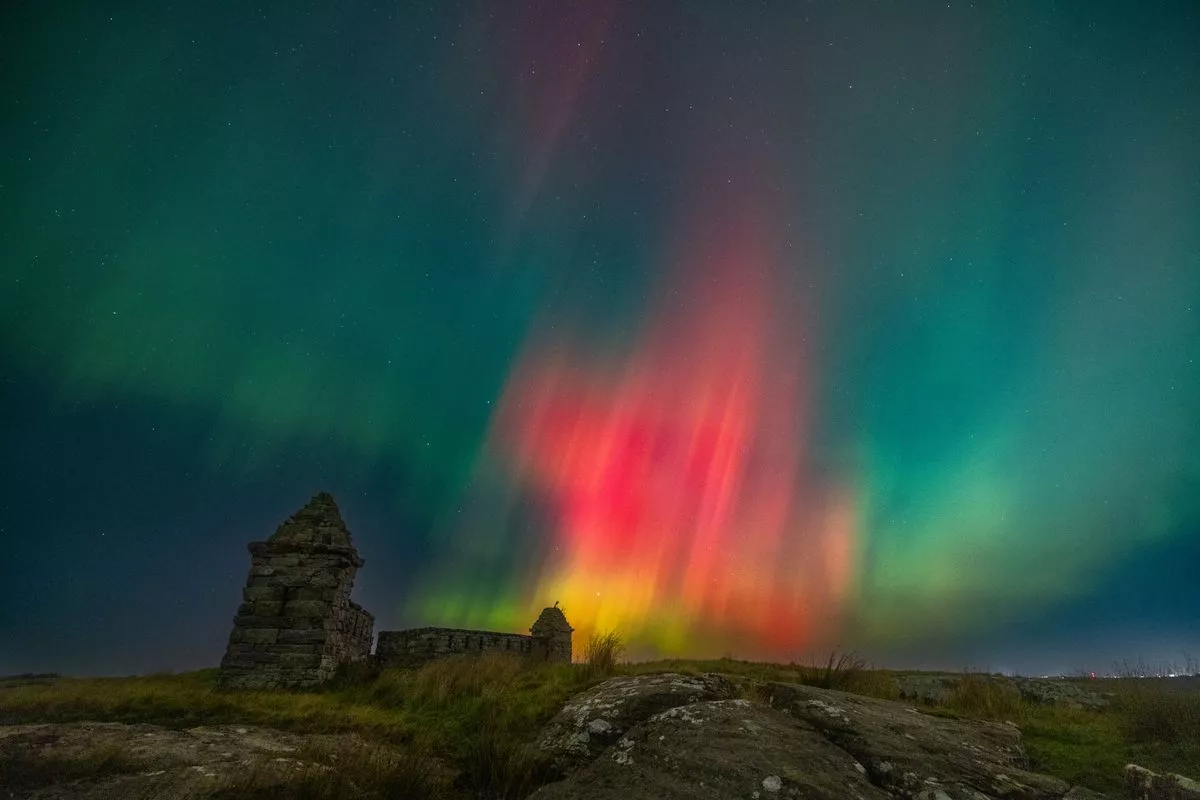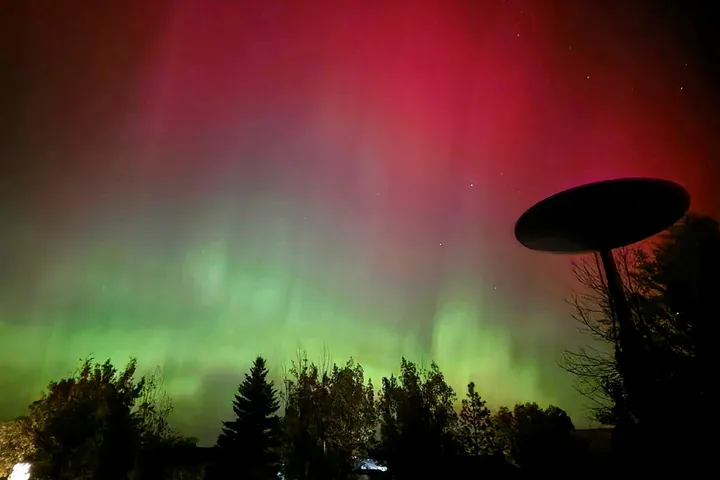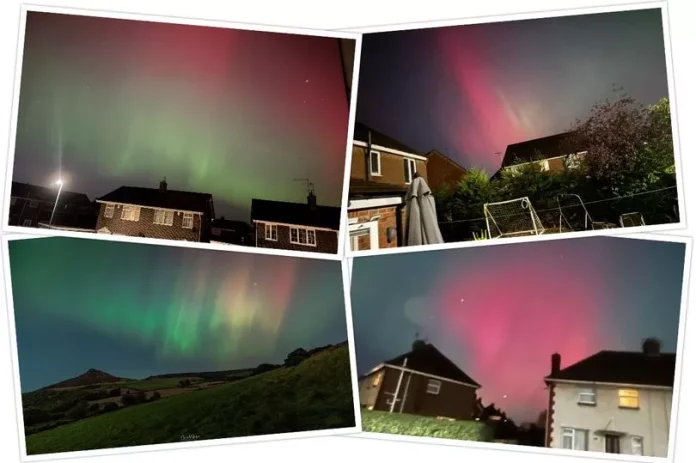The Northern Lights were an amazing sight for much of the UK overnight, with many people sharing their stunning images on social media.
The Northern Lights, also known as the aurora borealis, are caused by solar particles hitting gases in the earth’s atmosphere, and phenomena such as solar storms have in this case contributed to the bright colours in the sky.

The northern lights have become much more common in the UK this year as solar activity has increased.
Excited onlookers reported seeing the show last night from various areas including Liverpool, Kent, Norfolk and Sussex. There were also reported sightings in parts of Scotland.
Nicole Jay, who watched the spectacular display from her garden in Essex with husband Richie, said:
It was such an incredible experience. Especially from our own garden! A little bit of magic.
A forecast published by the Met Office on October 10 says the aurora borealis will be visible again across the UK on the night of October 11 and into the early hours of October 12.
Britons wanting to see the northern lights tonight have less chance than they did yesterday. The Met Office’s latest weather forecast says:
The probability of aurorae persists initially, but gradually decreases during October 11, and by October 13 is increasingly restricted to far northern geomagnetic latitudes.
And those who do manage to see it won’t be disappointed: many social media users have shared their stunning photos of the northern lights overnight online.
The Nothern lights on earth, which are most often seen in high latitudes but can also spread southwards, are mainly caused by geomagnetic storms, the source of which is solar activity.

The sun goes through a cycle of about 11 years called the solar cycle, the peak of sunspot activity on the surface of the sun is called the solar maximum. Sunspots can cause the release of huge clumps of energy towards the earth, called coronal mass ejections, which in turn can lead to auroras.
